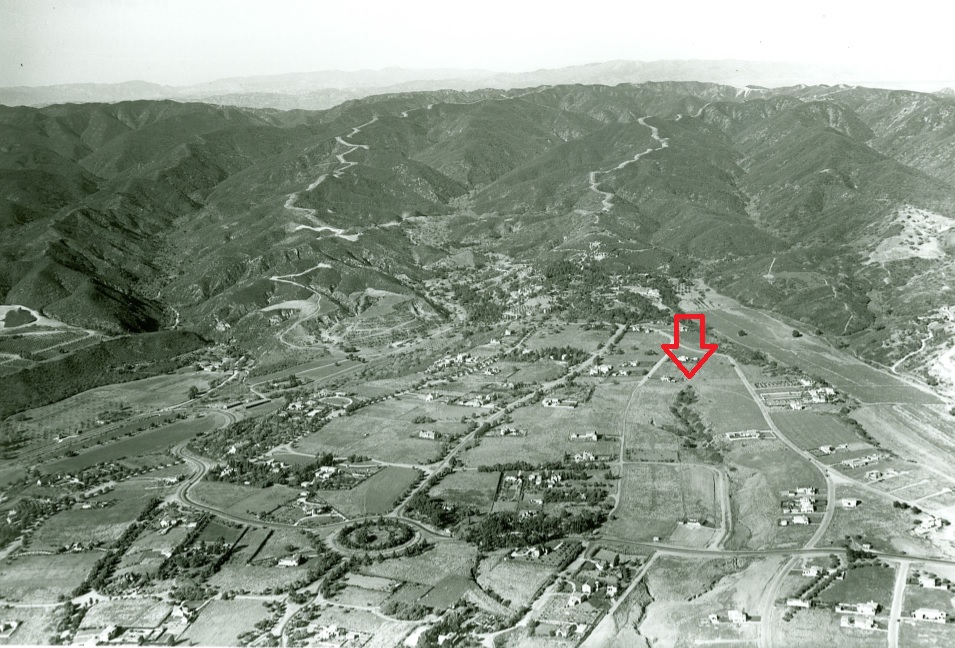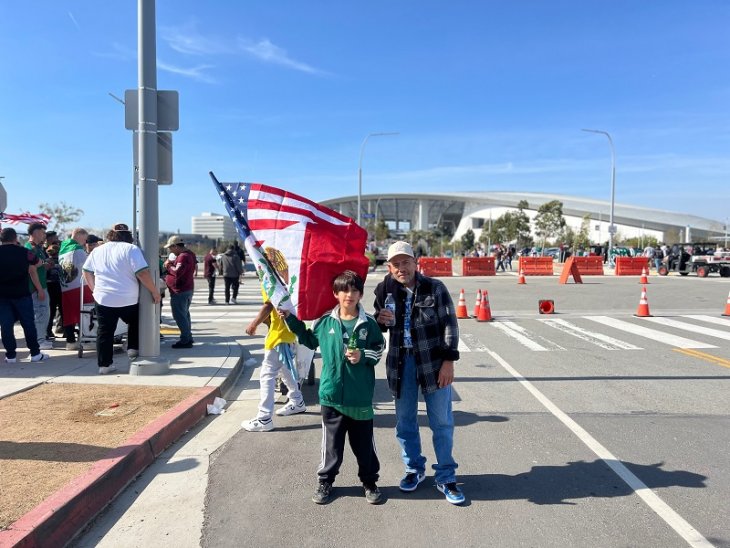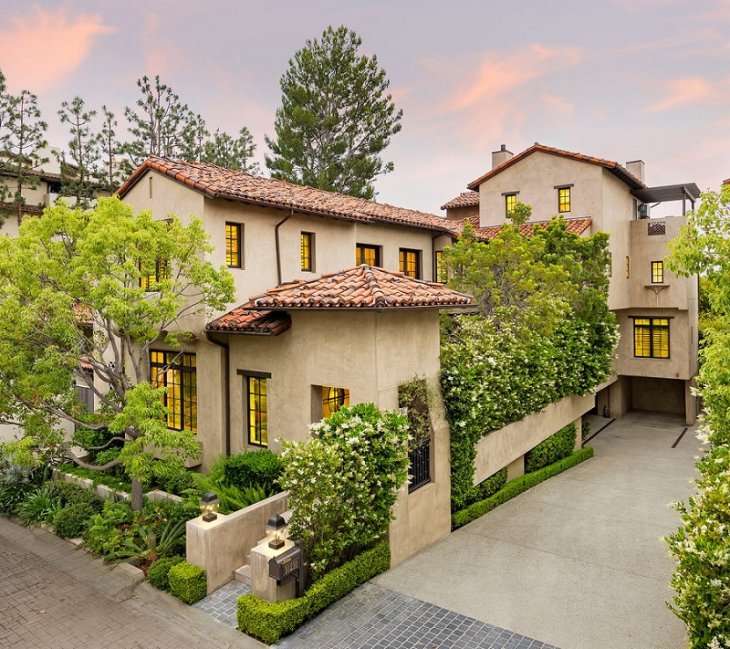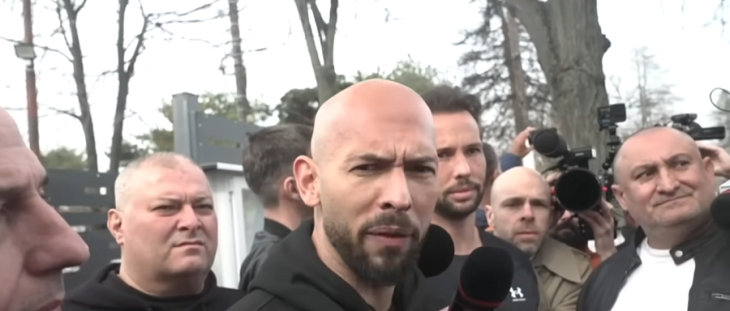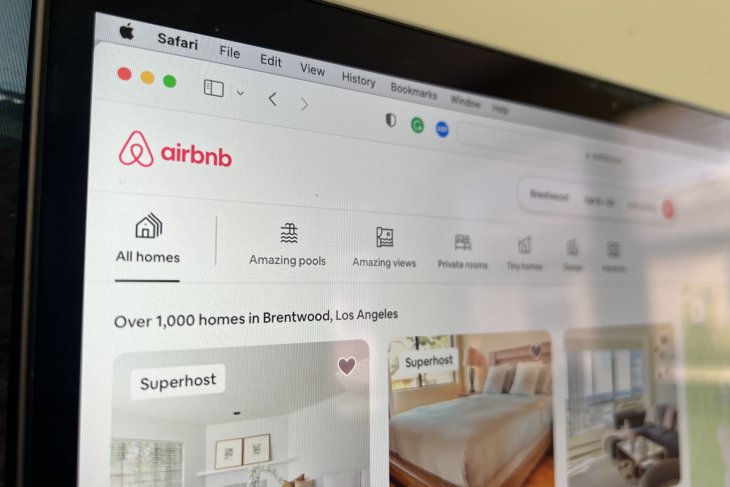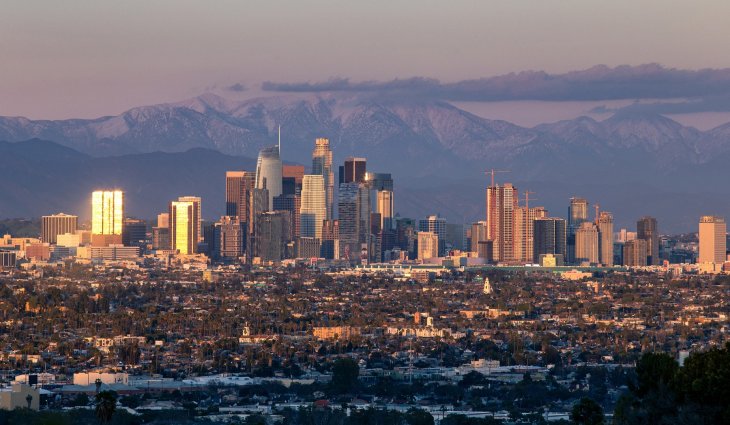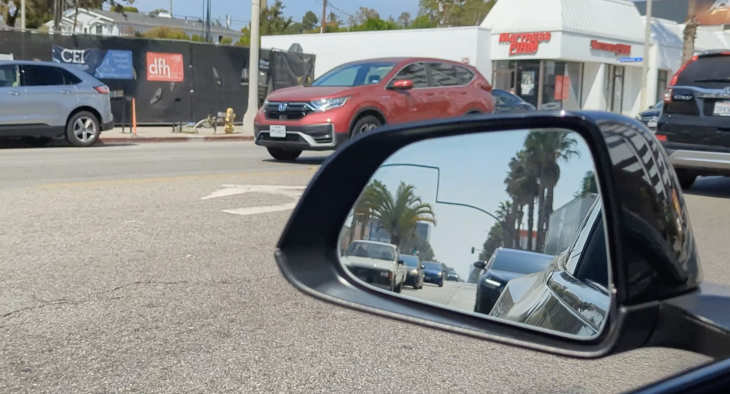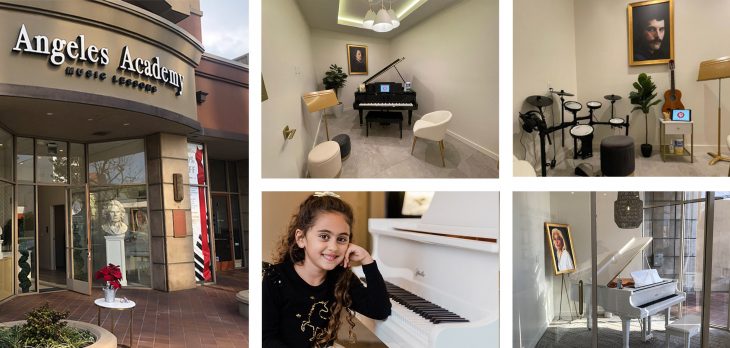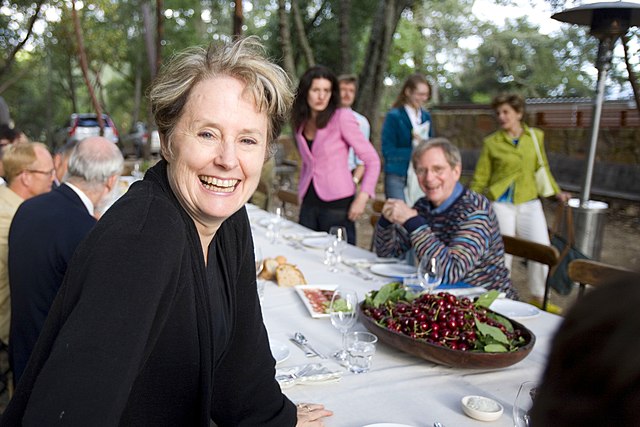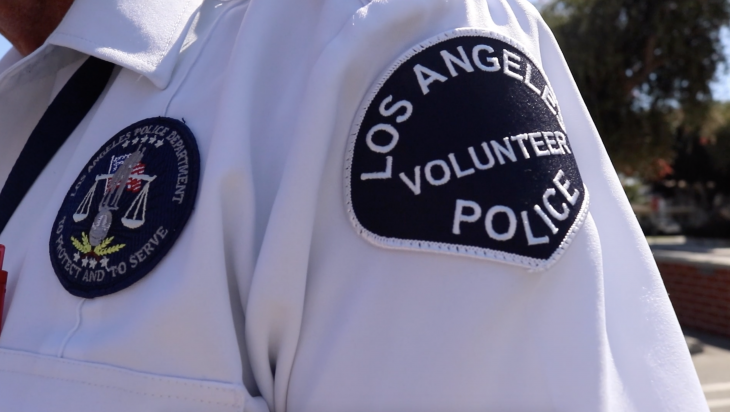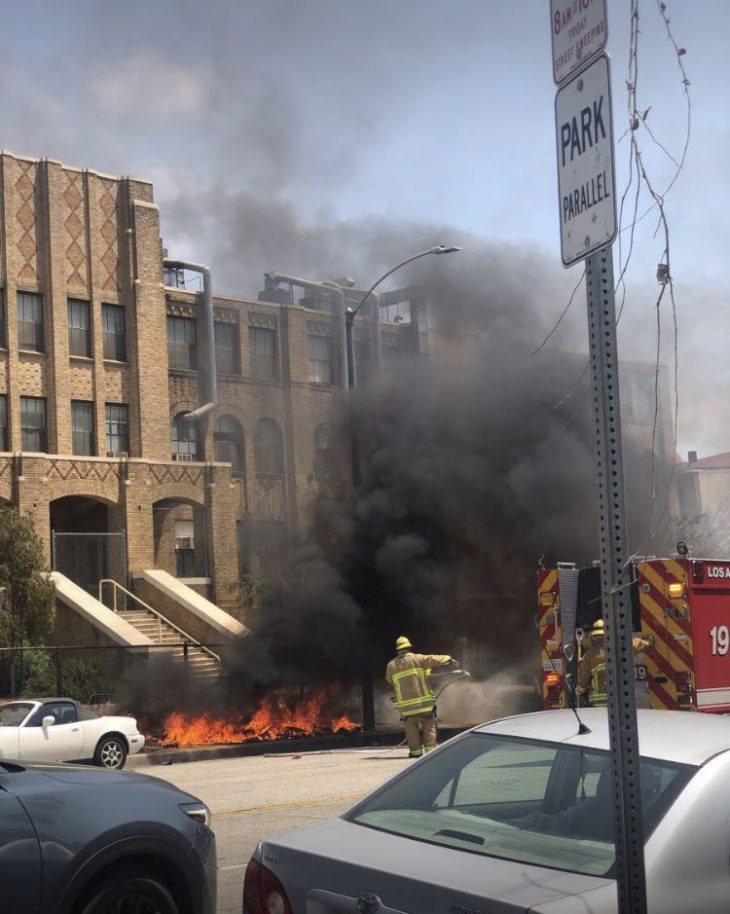By Fred Gurzeler

“Brentwood Park.”
So began a front page article in the December 15, 1905 edition of The Daily Outlook (which eventually changed its name to the Santa Monica Evening Outlook). “That is the name that has been chosen and the new 320 acre park city on San Vicente boulevard and Twenty-sixth street has been christened.” Named in honor of William Lynton Brent (January 6, 1868 – April 5, 1955), a major owner/investor in the development, the tract map for Brentwood Park was recorded January 23, 1906 and “Brentwood” was born. The eastern boundary of Brentwood Park was Brentwood Canyon.
On the other side of Brentwood Canyon lay Westgate, which was comprised of various tracts (Westgate, Westgate Acres, Westgate Heights and Westgate Gardens) that went all the way to the Pacific Branch of the National Home for Disabled Volunteer Soldiers. The first tract – simply known as Westgate – was surveyed in March, 1905 and recorded April 19, 1905, but the developers, the Santa Monica Land and Water Company, wasted no time announcing the new development; advertisements were already appearing in the local newspapers: “Amid the Foothills Fair” touted an April 12, 1905 ad in the Los Angeles Times and “The Foothill Garden” in a May 21, 1905 ad in the Los Angeles Herald. Although Westgate is a tad older than Brentwood, the Brentwood name would eventually consume it. By the 1930s Westgate as a distinct community was all but gone.
One of the earliest references to “Brentwood Canyon” is in the September 10, 1910 edition of the Los Angeles Herald, which reported a “brush fire in Brentwood Canyon burns 4-mile area.” “The fire is but a short distance from Brentwood Park, the fashionable residence district which was recently opened.” That particular fire burned through a number of canyons in the Santa Monica Mountains.
Sandwiched between Brentwood Park and Westgate was Carlos Heights, the first tract map attempting to subdivide Brentwood Canyon. Recorded in October, 1906, the identity of “Carlos” is not known. Based on naming conventions of the time, it is most likely a surname; streets named after men, for example, used their last name while streets named after women used their first name, e.g., Dorothy, Adelaide, Helena, etc. It could be San Carlos or a Señor Carlos that had settled in the area. The Carlos Heights Improvement Company, incorporated in January 1907, owned the tract for a while. Considering the number of times the land changed hands, it appears the area was not easy to develop, most likely because of the canyon. Canyon View Drive along the edge of Brentwood Canyon makes its first appearance on Tract Map 5666 in January, 1923. The “Brentwood Canyon Estates” (Tract 6466) was established in May, 1923.
While the area containing the upper section of Brentwood Canyon was being advertised as a rich man’s paradise, in the area previously known as San Vicente Park south of Montana, the canyon was becoming the boundary for two different types of neighborhoods. Robert Marsh (January 20, 1874 – October 1, 1956), a prominent real estate developer, first developed “Ethelwyn Manor” on the east side of the canyon, an area bounded by Montana, Wellesley, Darlington and Gretna Green Way. (For those interested in such details, it is Tract 1420, surveyed September, 1911.) On the west side of the canyon Mr. Marsh developed “Ethelwyn Manor Heights” (Tract 2385, March, 1913). An article in the January 18, 1914 Los Angeles Times explained the difference: “Ethelwyn Manor Heights is in every sense of the word the home of the millionaire, so imposing is it from every standpoint. Its improvements are to be such as are only incorporated in the very highest class subdivisions.
“Ethelwyn Manor, the less important though beautiful sister of Ethelwyn Manor Heights, is a bungalow tract built to fulfill the highest requirements of the man of more limited means.”
The Ethelwyn Manor designation has long since fallen out of use and the origin of the name remains, so far, a mystery. A 1912 article said this “beautiful home spot most appropriately takes its name from manors of Australia and England” but does mention who Ethelwyn may have been. The “Heights” part of the development was mostly in Santa Monica and today includes such streets north of Wilshire as Franklin, Stanford, Centinela and Burlingame. The Los Angeles side is now known as South Brentwood. One of the features of Ethelwyn Manor Heights was going to be a “splendid observation tower” of “exceptional height.” The tower was never built. Instead, Santa Monica eventually built water reservoirs on Mt. Olivette (sometimes spelled “Olivet” in early newspaper accounts), the highest point in the city.
The name Brentwood was adorned with many suffixes over the years. Real estate developers were class conscious men in those days and the word “height” was a popular suffix, used to convey a sense of being higher than the average man, financially, socially and geographically. And, without digressing too much, Montana Avenue was a greater divider of neighborhoods by class than San Vicente Blvd. The Brentwood Country Club’s property was originally mapped out as an upper class residential neighborhood with ritzy street names such as Brentana Avenue (Brentwood + Montana), Santana Avenue (San Vicente + Brentwood), Vernon Place and Manor Drive, but the idea was quickly abandoned. Plans for the country club began in 1915 and the club formally opened March 26, 1916. Officers and members included men with names such as Bundy, Janss, Robert Marsh and King C. Gillette of safety razor fame.
As time passed, older names started giving way to newer names. A November 3, 1932 house for rent ad in the Los Angeles Times provides a snapshot of an area in flux: “$175 BEAUTIFUL Brentwood Canyon rim acre estate, 12-room Spanish, 5 master bedrooms, 3 baths. Owner, 320 N. Carmelina, Brentwood Heights, West L.A. [Phone:] 35320”
What is noteworthy above is the inclusion of West Los Angeles. The name “West Los Angeles” was officially adopted in 1928 (although West Los Angeles as an area was in use well over a decade by then) by the Los Angeles Chamber of Commerce and included the “districts of Sawtelle, Beverly Crest, Beverly Estates, Beverly Park, Beverly Ridge, Beverly Terrace, Castellammare, Cheviot Hills, Highland Hills, Holly Vista, Holmby Hills, Huntington Palisades, Pacific Palisades, Miramar Estates, Bel-Air, Brentwood Heights, Santa Monica Canyon and Westwood Hills” (Los Angeles Times, October 1, 1928). The use of West Los Angeles (or, simply, Los Angeles) and the advent of the ZIP Code resulted in the “loss” of a number of community names.
It is amazing that Brentwood Canyon survived. Although sections were filled in for Sunset, San Vicente and Montana Blvds. and the Brentwood Storm Drain project in 1960 obliterated most of the canyon that ran through the Brentwood Country Club, the canyon is still mostly intact. Had the developers come in the 1920s or later it is possible most of the canyon would have been filled in, but at the turn of the 20th Century the heavy machinery to do so wasn’t readily available and not cheap. Plus, the canyon added a rustic charm that helped put the “park” in Brentwood Park. Although Brentwood Canyon ends just north of Wilshire, it once extended further to roughly Santa Monica Blvd. and Berkeley Street. The dip in Arizona between Centinela Avenue and Franklin Street in Santa Monica, for example, is part of Brentwood Canyon.
Brentwood Canyon is not the only “lost” canyon. The April 1881 plat map of the Rancho San Vicente y Santa Monica (the plat map was confirmed to Ramona Sepulveda after a long legal battle by the Sepulveda family) shows a “Cañada Yglesia” (Church Canyon), which could be the original name for Sepulveda Canyon. The canyon may have later been officially rechristened in honor of her family, although references to Sepulveda Canyon go back before 1881, with the October 22, 1859 edition of the Los Angeles Star, for example, reporting a killing “at Sepulveda’s cañon, about eighteen miles from the city,” the Santa Monica Outlook reporting on July 31, 1878 that E. E. Shattuck’s apiary (bee ranch) in “Sepulveda cañon” may produce over 100,000 pounds of honey and the September 23, 1880 Los Angeles Herald reporting a hunting expedition for quail, rabbits and deer in “Sepulveda cañon.” It is most likely some canyons had a Spanish and English name at the same time for a while.
While the Sepulveda name is well-known, the origin of Kenter Canyon’s name is very obscure. The Los Angeles Herald noted in its February 25, 1882 edition that an “A C Kenter” claimed “160 acres of unsurveyed government land in Varroza canyon, valued at $250.” Whether or not this is the Kenter and Varroza canyon was the original name (or even if “Varroza” is the correct spelling) remains lost in the mists of time.
Old newspaper articles mention a “Boehme Canyon” between Kenter and Sepulveda canyons. The Boehme family was well established in Santa Monica, with George Boehme being one of the first property owners in the city, having arrived in 1875 on the first ship to dock at the Santa Monica wharf. He was also the City Treasurer from 1892 to 1895. Deer hunting in the canyons of the Santa Monica Mountains was a pastime for the well-to-do in those days and it is possible the Boehmes did their hunting in the canyon named after them. The Boehmes may have also had a honey farm; quite a number of men had apiaries in the canyons. In the early 1900s the Gamberi Ranch was located in Boehme Canyon, a 21 acre fruit ranch with oranges, avocados as well as other produce such as grapes and potatoes. The canyon name is all but gone today, but the canyon itself can be traced along N. Bundy Drive north of Sunset Blvd. and was sometimes referred to locally as Bundy Canyon in the 1920s and after.
In the 1870s a man by the name of Guy C. Manville had an apiary in one of the canyons. The canyon, originally called Casa Viejo Cañon (Old House Canyon) and noted on the Sepulveda’s 1881 plat map, became known as Manville Canyon, but soon became corrupted as Mandeville. Both names were in use for a while, with variations such as Manvel, Mandiville and Manderville popping up in print, but eventually Mandeville Canyon became the accepted name. There was also a back and forth between the words Cañon and Canyon and the English word eventually won out. The March 20, 1928 Santa Monica Evening Outlook ran a small article noting that originally Mandeville Canyon “bore a name in the Spanish vernacular that women found embarrassing to repeat in court.” Sadly, the article did not divulge what the name was.
Brentwood used to have many more canyons and arroyos. Most are truly lost now, but traces still remain, such as the winding Bundy Drive down to Wilshire Blvd or Barrington Avenue. There is still a canyon north of San Vicente between Saltair and Westgate Avenues that also managed to survive decades of development. The canyon doesn’t appear to have a name, but “Westgate Canyon” would certainly be historically appropriate. Although the USGS maps noted the canyons had intermittent streams, at least one section of Brentwood Canyon has a year-round creek fed by the same underground source of water that supplies what was once known as San Vicente Springs, now known as “Serra Springs” or “Tongva Sacred Springs” and located on the University High School campus. These springs were a primary source of water for the City of Santa Monica in its infancy.
The complete history of Brentwood and its environs has yet to be written, but an excellent place to start is “Brentwood (Images of America: California)” by Jan Loomis. Many local newspapers have been digitized and are now on line and easily searched. Newspapers are a wonderful primary source for any research. Some online searches are free, such as old editions of the Santa Monica Evening Outlook via the Santa Monica Public Library website. You never know what long lost information lies waiting to be rediscovered!

